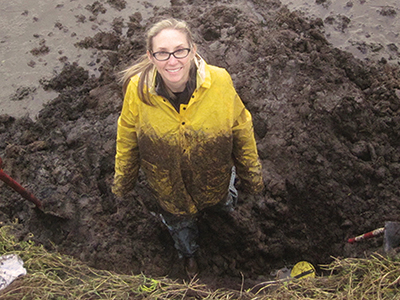Looking to the Past to Understand Future Tsunami Threats
Tsunami [tsoo-nah-mee]
noun An extremely large wave caused by a violent movement of the earth under the sea
Cambridge Dictionary
By Elizabeth Phillips
WSG Science Communications Fellow
The shaking started soon after everyone had gone to sleep. Houses collapsed, coastal shorelines sank, and those who did not immediately run for higher ground were likely killed by the onslaught of water that roared through coastal Washington all the way to Hood Canal.

Scientist Carrie Garrison-Laney in the field.
